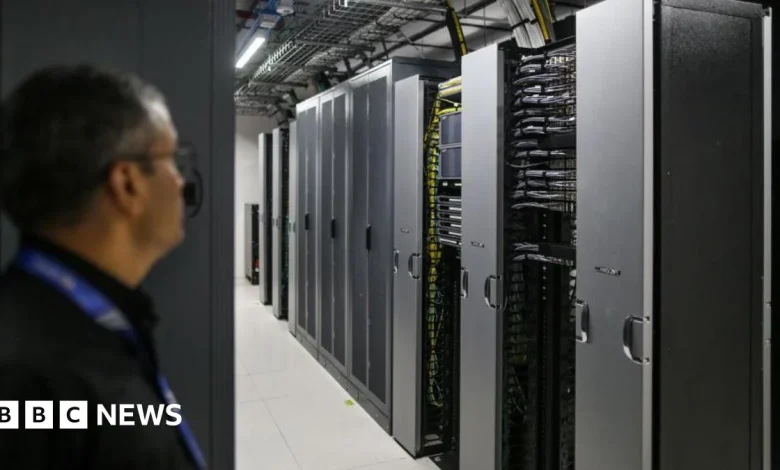Google, Meta, Amazon: India’s data centre boom confronts a water challenge

This boom has, however, presented policymakers with difficult trade-offs.
From Chile and Mexico to Georgia in the US and Scotland, serious concerns have been raised around data centres guzzling excess water for their cooling systems and consuming vast amounts of energy at the cost of local communities.
In an energy starved, water-scarce India, these challenges are even more accentuated.
According to the World Bank, India has 18% of the world’s population, but only 4% of its water resources, making it among the most water-stressed countries in the world.
India’s data centre water consumption, meanwhile, is expected to more than double from 150 billion litres in 2025 to 358 billion litres by 2030, putting further pressure on its water table.
Moreover, most of India’s data centres are concentrated in urban clusters like Mumbai, Hyderabad, Chennai and Bengaluru which have strong competing water needs.
A potential pushback from locals or a loss of licences to build and operate such centres as a result of growing water stress could hit the industry hard over the long term, experts say.
There are already some murmurs of discontent.
Advocacy groups like the Human Rights Forum, external have raised “alarm” over the Andhra Pradesh state government’s “public resource diversion” for Google’s proposed data centre, saying that Visakhapatnam city where it is slated to come up is already facing acute water stress which could intensify as a result of this investment.
Google directed the BBC to a document which says that the company uses a “peer-reviewed context-based water-risk framework” to evaluate local watershed risk at new sites to guide decision-making on whether to use a freshwater source.
While India has explicit policies and regulations that govern data protection and data centre development, zoning, energy use etc, “water use does not figure prominently in any of these policy groups, and is a significant blind spot that places high risk on the long-term functioning of these centres”, Sahana Goswami of WRI India, a water research organisation, told the BBC.
An S&P Global study predicts that 60-80% of India’s data centres will face high water stress in this decade itself as a result of limited resource availability.
This, in turn, could have a cascading impact on other industries.
“Imagine shutdowns of data centres in peak summer due to lack of water for cooling – how might this impact banking services, medical systems in hospitals using cloud services, transit system operations and more,” says Ms Goswami.
Companies need to bring greater innovation and explore mechanisms to use treated domestic and industrial waste water instead of fighting for this limited resource, experts say.
“India itself has examples of such innovation in the data centre space in Navi Mumbai. Further, various power and textile industries are much ahead in partnering with municipal authorities and water utilities,” says Ms Goswami.
Praveen Ramamurthy, a water recycling expert from the Indian Institute of Science in Bengaluru city, agrees.
“Non-potable or treated water must be made mandatory for cooling needs,” he told the BBC, adding that India must also select “low-stress water basins for new projects”.
He also advocates for the use of zero-water cooling technologies that are advancing globally, but “inconsistently deployed across Indian and legacy facilities”.





